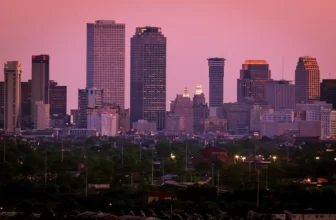While recreational cannabis remains illegal in Peru, the country has decriminalized possession for personal use and legalized medical cannabis. This shift reflects a broader global trend towards reevaluating cannabis laws. Peru’s approach to cannabis, balancing prohibition with medical legalization, mirrors the complex and evolving nature of drug policy worldwide. This article delves into the intricacies of Peru’s cannabis laws, providing insights into the current legal status, historical context, and cannabis prospects in this South American nation.
Key Takeaways
- Recreational cannabis is illegal in Peru, but possession for personal use is decriminalized.
- Medical cannabis was legalized in 2017, with evolving regulations to facilitate access.
- Cultivation, production, or sale of cannabis for non-medical purposes is punishable by law.
Historical Overview of Cannabis Regulation in Peru
Cannabis regulation in Peru has a complex history, marked by significant legal and cultural shifts. Traditionally, Peru maintained strict laws against cannabis, mirroring the global war on drugs. The cultivation, production, and sale of cannabis were met with severe legal consequences. However, the international movement recognizing the medical benefits of cannabis began to influence Peruvian policy.
A pivotal moment occurred in 2017 when the government legalized medical cannabis following a police raid in Lima, which closed down a facility producing cannabis medicines for patients with epilepsy and other conditions. This event highlighted the necessity for legal access to medical cannabis and marked a turning point in Peru’s drug policy.
The cultural and social attitudes towards cannabis in Peru have traditionally been conservative. However, these attitudes are gradually shifting, partly due to increased awareness of the medical benefits of cannabis.
The laws regarding hemp, a non-psychoactive variant of cannabis, have also been evolving. Recent regulations differentiate between psychoactive and non-psychoactive cannabis based on THC content, reflecting a nuanced approach to cannabis regulation. This historical overview underscores the dynamic nature of cannabis laws in Peru, influenced by global trends and domestic developments.
Medical Cannabis in Peru: Legal Provisions and Accessibility
The legalization of medical cannabis in Peru in 2017 marked a significant shift in the nation’s approach to drug policy. The law, known as Law No. 30681 or the “Cannabis Law,” allowed for the use, research, production, import, and commercialization of cannabis exclusively for medical and therapeutic purposes. However, the journey to accessible medical cannabis has been fraught with challenges. Initial regulations, while well-intentioned, created barriers such as high costs and limited supply, making it difficult for patients to access the medicine they needed.
In response to these challenges, the Peruvian government passed revisions to the regulations in 2023 to clarify legal terms and broaden access to cannabis for medicinal use. These new regulations aim to simplify the licensing process and allow for artisanal production by patient associations.
Patients seeking access to medical cannabis must register in a national registry, and the sale of psychoactive cannabis products requires a special medical prescription. These changes represent a significant step towards making medical cannabis more accessible to patients in Peru, reflecting a growing recognition of the therapeutic potential of cannabis.
Current Legal Status of Recreational Marijuana in Peru
In Peru, the legal status of recreational marijuana remains prohibitive. The production, sale, and importation of cannabis for recreational purposes are illegal and subject to severe penalties, including imprisonment. However, in a move towards a more progressive drug policy, Peru has decriminalized the possession of small amounts of cannabis for personal use. Individuals found with up to 8 grams of cannabis are exempt from legal penalties, a policy aimed at reducing the burden on the criminal justice system and focusing on more significant drug-related offenses.
This decriminalization reflects a global trend towards relaxing laws on minor drug offenses and acknowledges the disproportionate impact of drug laws on personal use. However, it’s important to note that this does not equate to legalization. Recreational use of cannabis remains illegal, and activities such as cultivation and sale for non-medical purposes are still heavily penalized. The current legal status of recreational marijuana in Peru represents a cautious approach, balancing the need for control with a recognition of the changing global perspective on cannabis.
Possession, Cultivation, and Consumption: What’s Allowed in Peru?
In Peru, the laws regarding possession, cultivation, and consumption of cannabis are delineated between recreational and medical use. For recreational purposes, possession of up to 8 grams of cannabis is decriminalized, meaning it is not subject to legal penalties. This policy is intended to focus law enforcement efforts on more significant drug-related crimes rather than personal use. However, cultivation, production, or sale of cannabis for non-medical purposes remains illegal and is punishable with prison sentences, reflecting the country’s firm stance against the recreational cannabis market.
The laws regarding medical cannabis are more permissive. Patients registered in the national registry can legally access medical cannabis. Recent regulations have also opened the door for artisanal cultivation by patient associations, a significant step in making medical cannabis more accessible. The sale and distribution of medical cannabis are regulated, with licensed pharmacies being the primary legal outlets. This regulatory framework aims to ensure the safe and controlled use of medical cannabis, balancing the need for patient access with public health and safety concerns.
What Future for Cannabis Legislation in Peru?
The future of cannabis legislation in Peru appears to be evolving, particularly in the realm of medical cannabis. Recent regulatory changes suggest a growing openness to making medical cannabis more accessible to patients. While recreational use remains illegal, the decriminalization of small amounts for personal use indicates a more tolerant approach. Whether these trends will lead to broader legalization efforts or further relaxation of existing laws remains to be seen. As Peru continues to navigate its path in cannabis legislation, it will be essential to monitor these developments and their implications for both medical and recreational cannabis use.
To Sum Up
Is Marijuana legal in Peru? The legal landscape is nuanced. Recreational marijuana remains illegal, but possession of small amounts is decriminalized. Medical cannabis is legal under specific regulations, reflecting Peru’s evolving stance on cannabis. These laws are in a state of transition, balancing prohibition with medical legalization and reflecting global trends in drug policy. As Peru continues to navigate its path in cannabis legislation, it’s crucial to stay informed about these changes. Understanding the legal status of cannabis in Peru requires a nuanced view of its laws, cultural context, and potential future developments in legislation.









